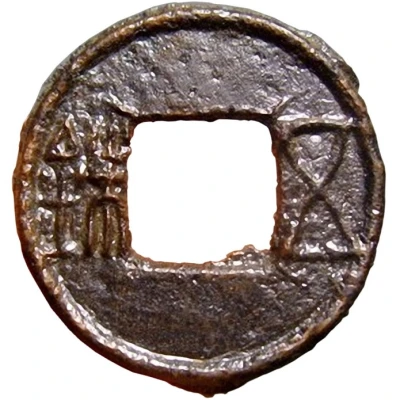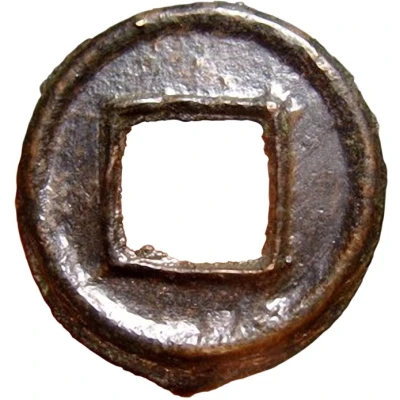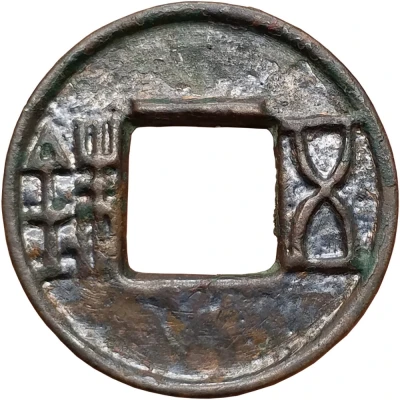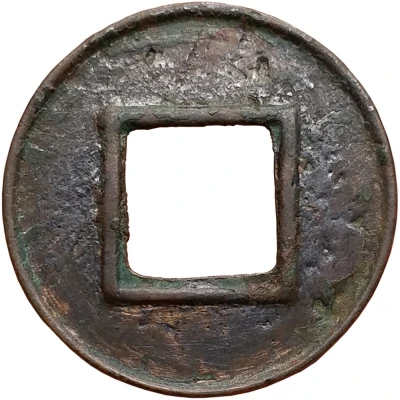


© Christopher Li
5 Zhu "Western Han" type; unfiled edge 118 BC - 115 BC
| Copper | - | 27 mm |
| Issuer | China (ancient) |
|---|---|
| Period | Western Han Dynasty (202 BC - 8 BC) |
| Type | Standard circulation coin |
| Years | 118 BC - 115 BC |
| Value | 5 Zhu |
| Currency | Zhu (119 BC to 9 AD) |
| Composition | Copper |
| Diameter | 27 mm |
| Thickness | 2.1 mm |
| Shape | Round with a square hole |
| Technique | Cast |
| Orientation | Medal alignment ↑↑ |
| Demonetized | Yes |
| Updated | 2024-10-09 |
| Numista | N#210850 |
|---|---|
| Rarity index | 80% |
Reverse
Blank (uniface).
Edge
Rough
Comment
The "Western Han" type is differenciable from the "Eastern Han" type in the top horizontal of the right radical of Zhu: the "Western Han" type is flat whereas the "Eastern Han" type is cuved. The type with unfiled edges is the earliest type of Wu Zhus.These were introduced in 118 BC as part of the 4th monetary reform during the reign of Emperor Wu of the Western Han dynasty.
The reform was aimed to eradicate illegal extraction of copper from coins as a way to establish monetary creditability. The base denomination of each coins raised from 3 Zhu to 5 Zhu, increasing the difficulty of counterfeiting, and from the policy, all ½ Liang coins (as well as the 3 Zhu coins) were abandoned.
The newly introduced 5 Zhu coins featured raised rims on both sides, meaning it was easy to identify the tempered coin and render them invalid by law. The casting of these 5 Zhu coins were executed by the Commanderies (郡縣; Jun) and the Principalities (藩國; Guo), leading to these being called Junguo Wuzhu (郡國五銖).
However, the monetary reform was not successful, and the copper extraction and counterfeiting continued for the following reasons:
--- The Junguos did not fully understand or comply with the implementation of monetary reform, resulting in large variety of 5 Zhu coins.
--- The fineness of casting techniques were highly deviated among the Junguos. The weight varied from 2.5 grams to 7.5 grams (nominate weight being 3.25 grams), leading to the possibility of copper extraction.
--- The design of 5 Zhu did not stop debasement by mixing tin during coins casting.
The 5th monetary reform was implemented three years later, in 115 BC, to cope with these issues.
Interesting fact
One interesting fact about the Standard circulation coin 5 Zhu ("Western Han" type; unfiled edge) (118 BC - 115 BC) from China (ancient) made of Copper is that it features a unique combination of Chinese characters and imagery on its design. The obverse side of the coin features the Chinese character "Zhū" (銖) which means "copper" or "bronze," while the reverse side features a stylized image of a dragon, which was a symbol of power and good fortune in ancient Chinese culture. The coin's design reflects the blending of practicality and symbolism in ancient Chinese currency, where coins were not only used as a medium of exchange but also as a means of conveying cultural values and beliefs.

